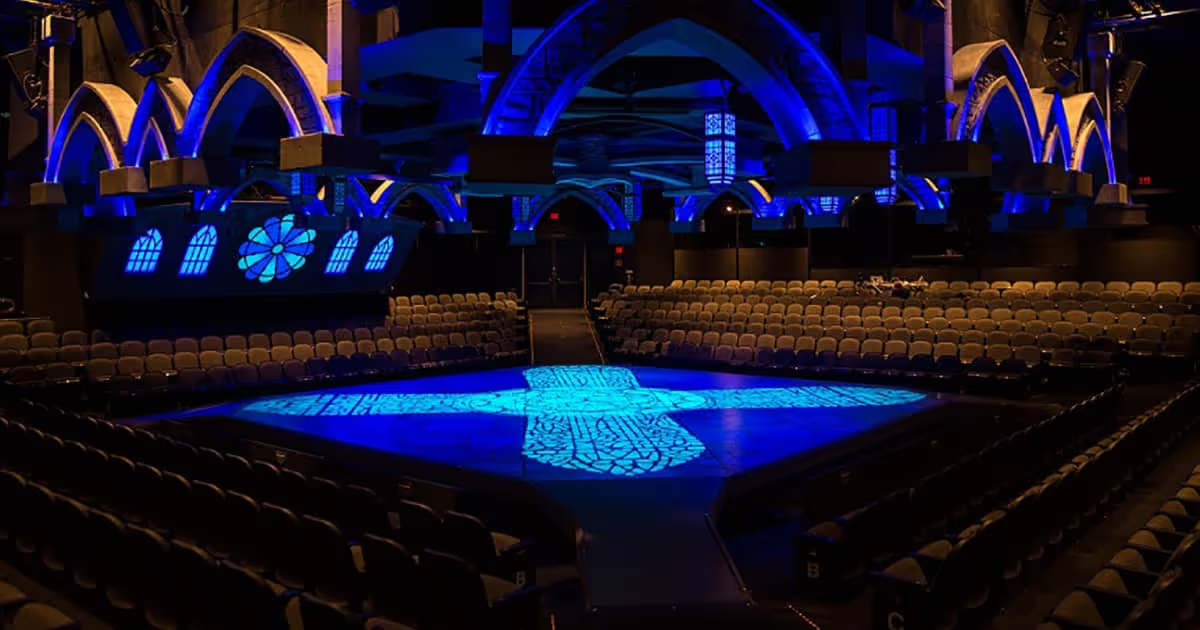Cats
Marc Robin, take a bow! You've transformed Cats from a pretty good novelty musical into a dancing classic at the Marriott Theatre.
Since Cats closes on Broadway in 2000 after a nearly 18-year run, the show has pretty much disappeared from the area theater scene. But now a new generation of young playgoers will have the opportunity to see Cats
for the first time and there can be no better introduction for viewers of any age than the dazzling revival under Robin’s guidance at Marriott.
Robin laid the groundwork for his triumph by gathering together an ensemble of 26 astoundingly gifted singers and dancers, some familiar local faces and some from outside the area. Robin has tightened the show, omitting the excruciatingly tedious pirate ship scene from the start of act II so the entire production comes in at just over two hours, with one intermission and no fat. Given the Marriott in-the-round stage, replicating the famous oversized junkyard set was not feasible. But the elimination of the set just gives Robin more performing space for his glorious choreography.
“Cats” is mostly based on poems by T. S. Eliot set to music by Andrew Lloyd Webber. There is just a thread of a narrative, but the show is really a sequence of production numbers featuring various larger than life cats in action. So a director has plenty of wiggle room to inject his/her own ideas within the musical’s loose framework.
Cats has always been a dancing show but Robin takes the choreography to new heights. The Jellicle ball number goes on minute after minute with an unending display of inventive and enthusiastic dancing. The exuberance of the scene segues into the first rendition of “Memory,” the score’s one hit song sung by the bedraggled and despairing Grizabella, ending the first act on an unexpectedly but satisfying subdued note.
Which brings us to Heidi Kettenring’s Grizabella. Kettenring has the least stage time of any member of the ensemble, but while she’s on view, she creates a hugely affecting portrait of the haunted and ostracized Grizabella, a once glamorous cat reduced to seedy poverty and aching memories of younger and happier days. Her reprise of “Memory” near the end of the show was hair raising in its intensity and her ascent to the Heaviside layer, where she gets a chance at a new life, would bring tears to the eyes of a head on Mount Rushmore.
Kettenring doesn't serve up the only star turn in the production. Sagiya Eugene Peabody stopped the show on opening night with his gymnastic solo as Mistoffelees. Sam Rogers was a splendidly sinister Macavity. Three female stalwarts of the Chicagoland musical stage did themselves proud—Johanna McKenzie Miller (Jellylorum), Tammy Mader (Jennyanydots), and Summer Naomi Smart (Bombalurina). Jake Klinkhammer was a fine bumptious Rum Tum Tugger. As Old Deuteronomy, Mathew Jones didn’t dance but he sang radiantly and endowed his character with a dignity and humanity that warmed the entire production.
But the collective heroes of the evening were the entire ensemble, executing Robin’s most intricate numbers with stunning precision and energy. And they could all sing, whether in solo parts, in chants, or in choral numbers. As to the dancing, it runs from tap to ballet, with whiffs of Jerome Robbins and Chicago as garnish. Robin weaves them all into a seamless whole that never flags and never stumbles. The hours of rehearsal it took to bring the production numbers to such a peak of excellence must have been beyond counting.
Robin takes advantage of the theater’s intimacy to bring the action directly to the audience. In one scene balloons are let loose in the crowd to be batted about gleefully by the viewers. Occasionally the performers played directly to the patrons. Early in the show, while the theater was dimly lit, performers crawled between the rows. One feline silently slithered through my row, almost giving the woman sitting next to me a heart attack
The staging may be denied the imposing junkyard set, but there is satisfying compensation in the other production values. Nancy Missimi designed a set of feline costumes that established looks and personalities for each performer. The wigs and makeup were all of a piece with the costumes in establishing the individuality of each character.
Thomas M. Ryan’s set design leaves the playing area open but creates metal perches above the corners of the stage where the cats can stretch and purr and gyrate, giving the action vertical as well as horizontal impact. Jesse Klug designed what must be the most complex, atmospheric, and dramatic lighting plan in the 35-year history of the Marriott Theatre. Robert Gilmartin designed the sound, very effective even if he couldn't include the roar of the off-stage garbage trucks periodically unloading their trash in the cat-infested junkyard.
The time is probably ripe for a reassessment of Cats after more than a decade away from area stages. Toward the end of its Broadway run the show was becoming a frequent butt of jokes ridiculing it as a kitschy tourist trap. Robin has revalidated Cats to its place on the A list of musicals of the last 50 years. Robin’s revival is highly personal but his vision, realized through the skills and verve of the exceptional cast, sets the bar very high for future stagings (it will be interesting to see what the estimable Paramount Theatre does with its revival this autumn). Not to be missed.











